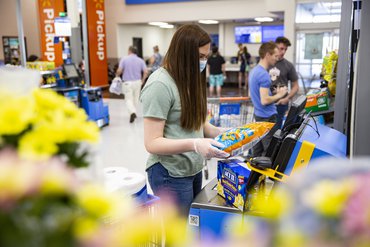Losses amounting to roughly 3.5 percent of sales have been attributed to self-checkouts, according to research from Grabango a grocery tech company. When compared to their traditional cashier counterpart, that equates to 16 times more loss.
Retail shrink costs U.S. retailers $100 billion a year. Shoplifting and employee theft account for two-thirds of this amount while internal process/control errors account for most of the rest, noted Grabango. Partial shrink is the most common and costly form of shoplifting, where a shopper pays for some of their purchases, but not the full amount. For example, a shopper might have three cans of soda but only scan two of them or might type in a code for a lower-priced item. Grabango's study revealed most of these activities occur at self-checkout.
“Shrink is a large and growing issue for grocery and c-store retailers,” said Grabango founder and CEO Will Glaser, in a statement.
To evaluate shrink rates for self-checkout systems, Grabango used computer vision to analyze nearly 5,000 retail transactions, comparing items the shoppers picked up during their shopping trip with transaction data to see what was actually purchased.
This company’s analysis revealed that 6.7 percent of self-checkout transactions had at least some amount of shrink compared to 0.32 percent with cashiers. On a revenue basis, the analysis suggested a shrink rate of 3.5 percent for self-checkout machines versus only 0.21 percent for conventional cashiers.
Related: Big Brands Win Egg Price-Fixing Suit; Walmart to Innovate Delivery Process

